Kumamoto Japan  Winter
TRAVEL LOG vol.1
Winter
TRAVEL LOG vol.1

Logged by Garth “Kakeru” Crouch
A travel writer and translator who explores “off the beaten path” Japan.
Historic & Cultural Sites in Kumamoto Prefecture
OVERVIEW
Like all of Japan, Kumamoto has its fair share of historic places and buildings. While sites like Kumamoto Castle are quite well-known by foreign tourists and certainly worth seeing, many of the prefecture’s other incredible historic and cultural spots are not so well-known, meaning you can have a more in-depth experience, minus the crowds!
Castles, shrines, old saké breweries, historic towns, and a famous kabuki theatre; Kumamoto Prefecture has so much to offer those who are willing to venture off the beaten path.
Heading out to explore these lesser-known places at your own pace will make for a much more impactful experience and you’ll have a new appreciation for the efforts that go into keeping these historic locations alive for future generations.
There are so many places of interest in Kumamoto, so this list is certainly not exhaustive, but these following historic sites left a lasting impression on me.

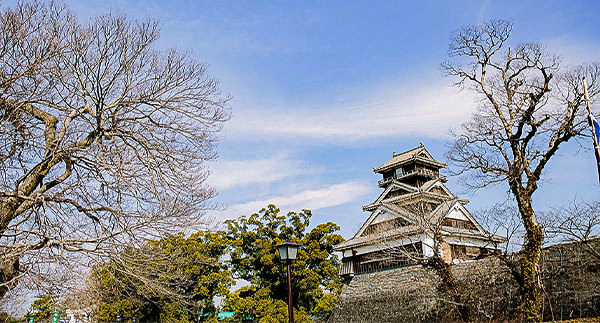
Kumamoto Castle
With over 400 years of history, Kumamoto Castle has been the stage for many historical events, so it’s easy to see why it’s such an important part of Japanese history.
Sustaining heavy damage during the massive earthquake that struck the region in 2016, the castle has been under extremely careful reconstruction ever since to maintain historical accuracy. Don’t let that scare you off visiting though, as the whole experience is still exciting, and the crumbled sections of wall add another unreal dimension to the scenery.

The stone ramparts of Kumamoto Castle are called musha-gaeshi, which roughly translates to “warrior repel.” While the walls seem to have a steady slope at the base, making them look easy to climb, the top half of the wall is incredibly steep, meaning samurai, and even nimble ninjas were unable to make it to the top.
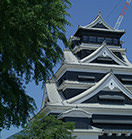
Kumamoto Castle --- Kumamoto City
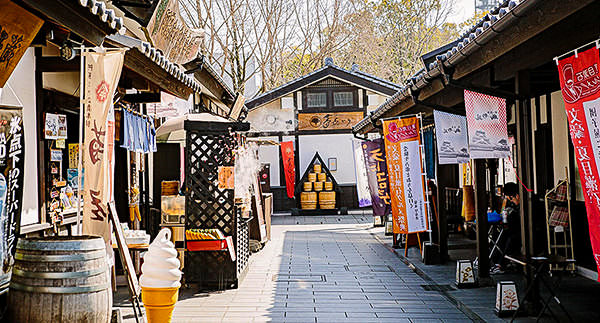
Sakuranobaba Johsaien
After roaming the castle grounds, we walked down to Sakuranobaba Johsaien, a replica castle town created to enhance the historic experience of Kumamoto Castle and to showcase local food and culture. Don’t let the fact that Johsaien is a replica of a castle town throw you off going though; it is absolutely stunning and doesn’t have that fake theme park feel! Super clean, pretty to look at, and a whole lot of food and souvenirs on offer, Johsaien fits into the historic location perfectly. If you’ve made it to Kumamoto Castle, be sure to take a stroll through Johsaien."/kumamoto-japan/img"/kumamoto-japan/img"/kumamoto-japan/img"/kumamoto-japan/img"/kumamoto-japan/img"/kumamoto-japan/img"/kumamoto-japan/img"/kumamoto-japan/img"/kumamoto-japan/img"/kumamoto-japan/img"/kumamoto-japan/img"/kumamoto-japan/img"/kumamoto-japan/img"/kumamoto-japan/img"/kumamoto-japan/img"/kumamoto-japan/img"/kumamoto-japan/img"/kumamoto-japan/img"/kumamoto-japan/img"/kumamoto-japan/img"/kumamoto-japan/img"/kumamoto-japan/img"/kumamoto-japan/img"/kumamoto-japan/img"/kumamoto-japan/img"/kumamoto-japan/img"/kumamoto-japan/img"/kumamoto-japan/img"/kumamoto-japan/img"/kumamoto-japan/img"/kumamoto-japan/img"/kumamoto-japan/img"/kumamoto-japan/img"/kumamoto-japan/img"/kumamoto-japan/img"/kumamoto-japan/img"/kumamoto-japan/img"/kumamoto-japan/img"/kumamoto-japan/img"/kumamoto-japan/img"/kumamoto-japan/img"/kumamoto-japan/img"/kumamoto-japan/img"/kumamoto-japan/img"/kumamoto-japan/img"/kumamoto-japan/img"/kumamoto-japan/img"/kumamoto-japan/img"/kumamoto-japan/img"/kumamoto-japan/img"/kumamoto-japan/img"/kumamoto-japan/img"/kumamoto-japan/img"/kumamoto-japan/img"/kumamoto-japan/img"/kumamoto-japan/img"/kumamoto-japan/img"/kumamoto-japan/img"/kumamoto-japan/img"/kumamoto-japan/img"/kumamoto-japan/img"/kumamoto-japan/img"/kumamoto-japan/img"/kumamoto-japan/img"/kumamoto-japan/img"/kumamoto-japan/img"/kumamoto-japan/img"/kumamoto-japan/img"/kumamoto-japan/img"/kumamoto-japan/img"/kumamoto-japan/img"/kumamoto-japan/img"/kumamoto-japan/img"/kumamoto-japan/img"/kumamoto-japan/img"/kumamoto-japan/img"/kumamoto-japan/img"/kumamoto-japan/img"/kumamoto-japan/img"/kumamoto-japan/img"/kumamoto-japan/img"/kumamoto-japan/img"/kumamoto-japan/img"/kumamoto-japan/img"/kumamoto-japan/img"/kumamoto-japan/img"/kumamoto-japan/img"/kumamoto-japan/img"/kumamoto-japan/img"/kumamoto-japan/img"/kumamoto-japan/img"/kumamoto-japan/img"/kumamoto-japan/img"/kumamoto-japan/img"/kumamoto-japan/img"/kumamoto-japan/img"/kumamoto-japan/img"/kumamoto-japan/img"/kumamoto-japan/img"/kumamoto-japan/img"/kumamoto-japan/img"/kumamoto-japan/img"/kumamoto-japan/img"/kumamoto-japan/img"/kumamoto-japan/img"/kumamoto-japan/img"/kumamoto-japan/img"/kumamoto-japan/img"/kumamoto-japan/img"/kumamoto-japan/img"/kumamoto-japan/img"/kumamoto-japan/img"/kumamoto-japan/img"/kumamoto-japan/img"/kumamoto-japan/img"/kumamoto-japan/img"/kumamoto-japan/img"/kumamoto-japan/img"/kumamoto-japan/img"/kumamoto-japan/img"/kumamoto-japan/img"/kumamoto-japan/img"/kumamoto-japan/img"/kumamoto-japan/img"/kumamoto-japan/img"/kumamoto-japan/img"/kumamoto-japan/img"/kumamoto-japan/img"/kumamoto-japan/img"/kumamoto-japan/img"/kumamoto-japan/img"/kumamoto-japan/img"/kumamoto-japan/img"/kumamoto-japan/img"/kumamoto-japan/img"/kumamoto-japan/img"/kumamoto-japan/img"/kumamoto-japan/spring"/kumamoto-japan/img"/kumamoto-japan/img"/kumamoto-japan/img"/kumamoto-japan/spring"/kumamoto-japan/img"/kumamoto-japan/img"/kumamoto-japan/img"/kumamoto-japan/img"/kumamoto-japan/img"/kumamoto-japan/spring"/kumamoto-japan/img"/kumamoto-japan/img"/kumamoto-japan/img"/kumamoto-japan/img"/kumamoto-japan/img"/kumamoto-japan/summer"/kumamoto-japan/img"/kumamoto-japan/img"/kumamoto-japan/img"/kumamoto-japan/summer"/kumamoto-japan/img"/kumamoto-japan/img"/kumamoto-japan/img"/kumamoto-japan/img"/kumamoto-japan/img"/kumamoto-japan/summer"/kumamoto-japan/img"/kumamoto-japan/img"/kumamoto-japan/img"/kumamoto-japan/img"/kumamoto-japan/img"/kumamoto-japan/autumn"/kumamoto-japan/img"/kumamoto-japan/img"/kumamoto-japan/img"/kumamoto-japan/autumn"/kumamoto-japan/img"/kumamoto-japan/img"/kumamoto-japan/img"/kumamoto-japan/img"/kumamoto-japan/img"/kumamoto-japan/autumn"/kumamoto-japan/img"/kumamoto-japan/img"/kumamoto-japan/img"/kumamoto-japan/img"/kumamoto-japan/img"/kumamoto-japan/winter"/kumamoto-japan/img"/kumamoto-japan/img"/kumamoto-japan/img"/kumamoto-japan/winter"/kumamoto-japan/img"/kumamoto-japan/img"/kumamoto-japan/img"/kumamoto-japan/img"/kumamoto-japan/img"/kumamoto-japan/winter"/kumamoto-japan/img"/kumamoto-japan/img"/kumamoto-japan/img"/kumamoto-japan/img"/kumamoto-japan/img"/kumamoto-japan/winter"/kumamoto-japan/cn"/kumamoto-japan/tw"/kumamoto-japan/kr"/kumamoto-japan/jp"/kumamoto-japan/_nuxt"/kumamoto-japan/_nuxt"/kumamoto-japan/_nuxt"/kumamoto-japan/_nuxt"/kumamoto-japan/_nuxt"/kumamoto-japan/_nuxt"/kumamoto-japan/_nuxt

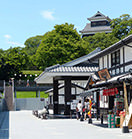
Sakuranobaba Johsaien --- Kumamoto City

Misumi West Port
At first glance, you could mistake the area of Misumi West Port as being a place from somewhere in Europe. Look a little closer though, and you’ll see the Japanese influence in the Western-style architecture. This mix of Western and Japanese style has made the town a very attractive location, which has been used as a film set in period dramas and films.

Misumi West Port is World Heritage-listed as a part of The Sites of Japan's Meiji Industrial Revolution: Iron and Steel, Shipbuilding and Coal Mining. The area was officially opened in the late 1800s but was only in use for a decade before being abandoned.

It’s not just the architecture at Misumi West Port worthy of attention. The surrounding natural scenery is also captivating.
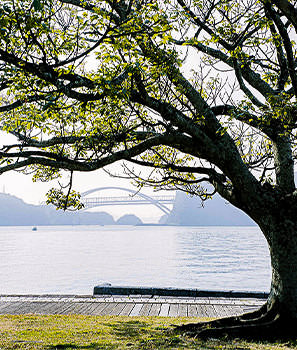
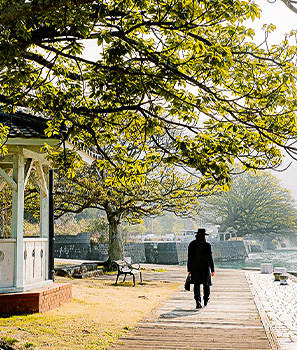
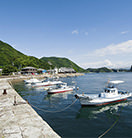
Misumi West Port --- Uki City
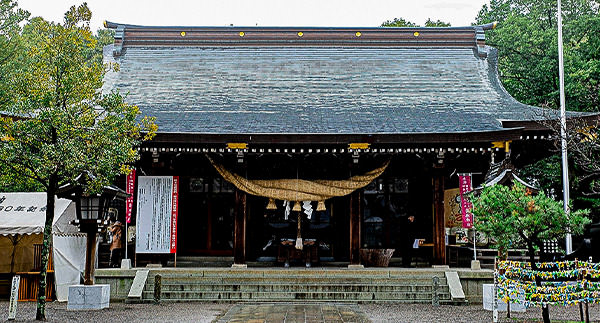
Kikuchi Shrine
On top of a tree-covered hill overlooking the city of Kikuchi is Kikuchi Shrine. Built in the late 1800s on the site where Kikuchi Castle once stood, the shrine was constructed to house the deified spirits of three members of the Kikuchi Clan, a daimyo family that strongly supported the emperor.

The weather was a little dreary when we arrived, but the surrounding greenery and moss-covered ground looked even more vibrant adding to the atmosphere of the shrine. The natural tones and subtle decoration of Kikuchi Shrine allow it to blend in harmoniously with the natural environment.
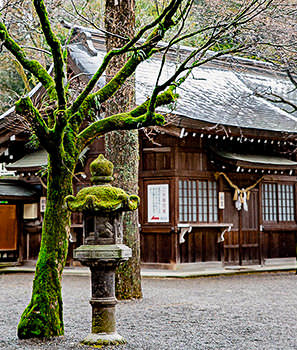


There are other small shrines and bright red torii gates located around the outside of Kikuchi Shrine too!

Kikuchi Shrine is also famous amongst locals as a spot to enjoy cherry blossoms in early spring, followed by azaleas


Shrine etiquette: Washing your hands
You will often see small roofed wells or fountains lined with ladles located near the entrance of a shrine or temple. These are used to cleanse your hands and mouth before making a request to the gods. While these fountains have many names, one of the more common is chozuya. This action of cleansing your hands and mouth is said to also purify your soul. The process isn’t so complicated, and if you watch what others are doing it’s quite easy to follow.
Step one: pick up the ladle in your right hand, fill with water from the fountain and use some of the water to rinse your left hand
Step two: take the ladle in your left hand rinse your right hand with some of the water
Step three: pour a small amount of the water into your left hand. Sip the water and rinse your mouth (don’t swallow the water)
Step four: rinse your left hand a little
Step five: hold the ladle up vertically to let the remaining water run down the handle before placing the ladle back for the next person
Note: Only fill the ladle once and use the water from that one scoop to complete all the above actions. Don’t double dip, and avoid allowing water from your ladle to spill back into the fountain. Don’t sip directly from the ladle.
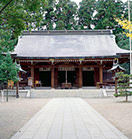
Kikuchi Shrine --- Kikuchi City
Yamaga City
The City of Yamaga, located in northern Kumamoto, was historically a popular onsen retreat, and its old-world charm still remains in part of the city today. Home to a grand kabuki theatre, old sake breweries, and festivals like the Yamaga Toro Roman Matsuri, a lantern festival featuring traditional paper parasols and carved bamboo lanterns, Yamaga is well worth a visit for those wanting to see authentic Japanese scenery.
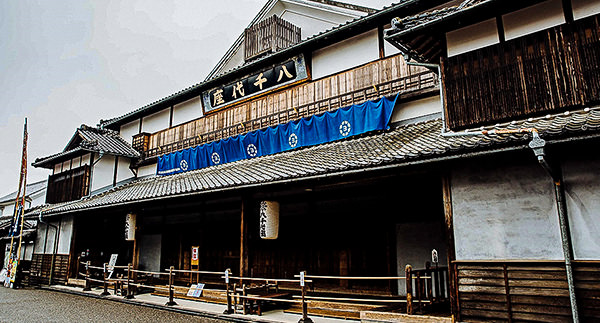
Yachiyo Theatre
First constructed as a grand kabuki theatre over 100 years ago, the theatre became a cinema for a short while before being completely abandoned. As the roof and walls of this magnificent building began to decay, the locals of Yamaga stepped in to carefully restore this important part of their town’s history.
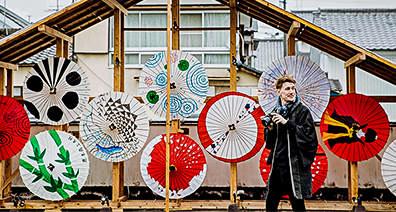

Tours of Yachiyoza are held almost daily, and friendly guides will take you through the facility, including hidden rooms used by kabuki actors, details on the art of kabuki, and the history of the theatre in detail. Sadly, I arrived on the one day it was closed so I couldn’t view the interior, but the view from the outside was impressive and the area around the theatre is also packed with historic charm. Yachiyoza is within a short walking distance to the town’s famous saké brewery.
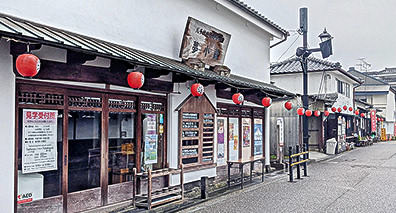
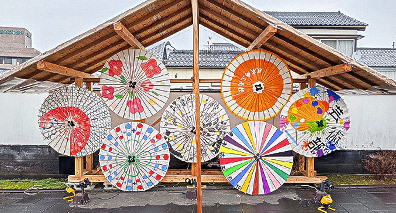
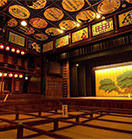
Yachiyo Theatre --- Yamaga City
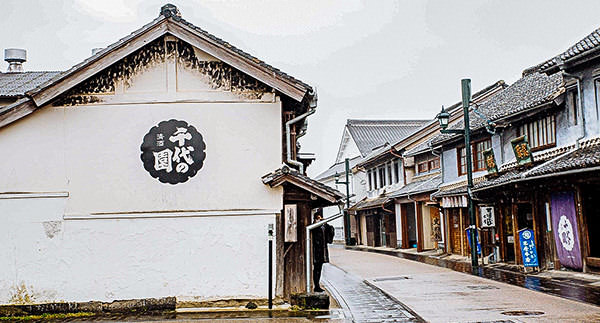
Chiyonosono blends
Constructed at the end of the 1800s, Chiyonosono is a famous saké brewery that actually started as a rice store. In order to create great quality saké, the brewery is extremely fussy about the rice they use.

The building itself is beautiful to look at as it still retains its traditional charm. Chiyonosono blends in with the rest of the street, giving you a glimpse of what life might have looked like 100 years ago. If you’re thinking about buying saké, you can ask the shopkeeper for a taste of what’s on sale to find something that suits your taste.



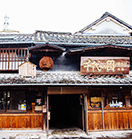
Chiyonosono blends --- Yamaga City
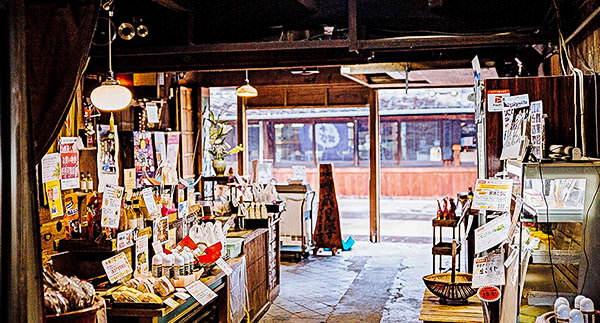
Kiya Honten
Just across the road is a koji factory called Kiya Honten. Koji is made by fermenting soybeans or rice that has been treated with a special kind of “koji mold” to create things like miso paste, soy sauce, and in the case of rice, to make saké.
The koji factory here has been around since the early 1800s and still makes koji the traditional way. Kiya Honten also sells amazake, a slightly sweet fermented rice drink that also contains koji, and has the same scent as saké without the alcohol. (That means those driving can also have a taste!) I was given a freshly brewed cup of amazake to try while I was there, and it was the perfect thing to warm me up on a cold winter day. Of course, you can buy packaged amazake to take home too. It’s said to be good for your health!
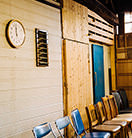
Kiya Honten --- Yamaga City
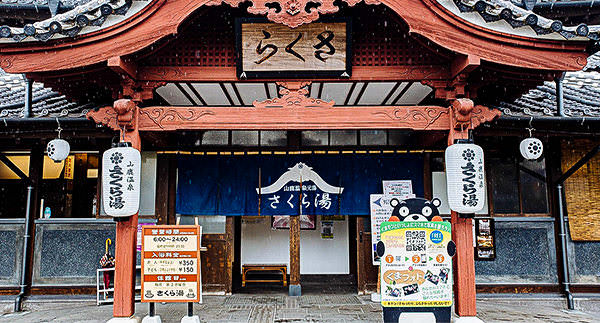
Yamag hot springs
Yamaga was also once renowned for its onsen, so after walking around the town admiring the sights, why not head to one of the many hot springs for a bit of rest and relaxation.
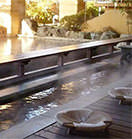
Yamag hot spring Tourism Association --- Yamaga City
Final thoughts
Having only been to Kumamoto City before, I had no idea what to expect from this trip into the countryside. The historic towns, friendly people, and atmosphere of these places blew me away! While I highly recommend hiring a car to get to many of these places so you can travel at your own pace and fully enjoy the experience, public transport or tours are also available to many of these places. If you’re going to be travelling on the island of Kyushu, make sure Kumamoto Prefecture is on your list of places to visit